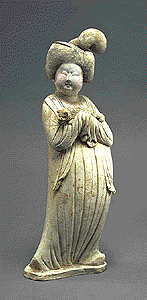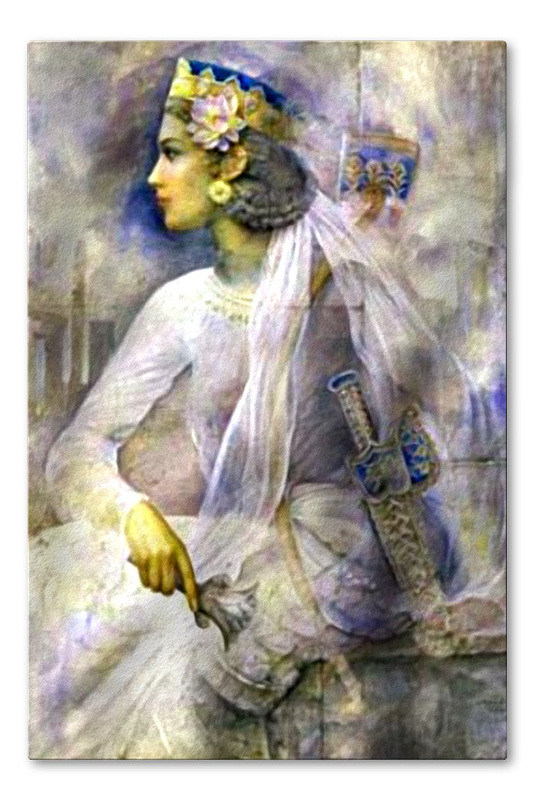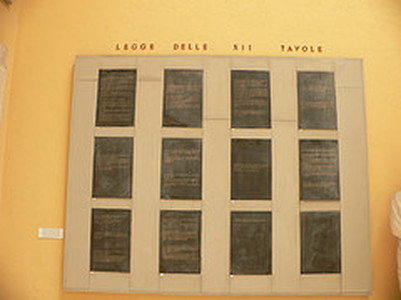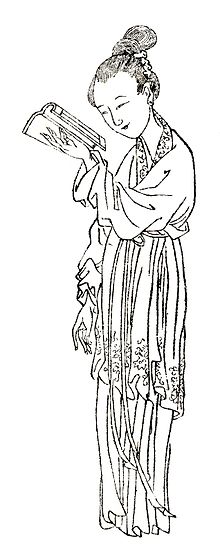AGMSPRITE Analysis
Art and ArchitectureIn the Tang Dynasty, approximately 618-907 A.D., the political power stabilized, when the imperial examination system elected officials and it allowed an equal opportunity for everyone to become a court officer. The ancient Chinese depictions of beautiful women also developed, as people began to value larger
women. A new image of a beautiful woman that emerged in China at this time was plump and voluptuous compared to a skinny pale woman that was depicted in the earlier times. Artworks began to glorify women who valued self-indulgence. More fat on a woman’s body symbolized her wealth, a quality that became increasingly attractive during the Tang dynasty. This suggested that it allowed women who were in the upper class to become lazy and care free. The geography is an important part of Chinese development because their land was flat, and the soil was very fertile for growing millet. This allowed for the food to be less of a burden on society, so this enabled a major surplus of food and it allowed women to get fat on the millet and other food that China could easily grow. |
MilitaryIt was also not unusual for women to fight, in fact there are accounts of strong, capable women fighting in the Sassanid army. One of the great commanders of Persian history was a woman by the name of Pantea Arteshbod. She played an important role in keeping law & order in Babylonia after the conquest of the Neo-Babylonian Empire in 547 B.C.formed the elite core of the Persian army in times of war and the royal guard in times of peace in Achaemenid Persian Empire. The elite force were known as “The Immortals”, because they were able to replace the dying or wounded soldiers. They had ten thousand men and they never did nothing. To insure loyalty, the original members of this “immortal” fighting machine were Persians by bloodline and trained form early childhood (age 7+). Not everyone could become one of the 10,000 since the training was very rigorous and hard both physically and psychologically.“The Immortals” were mainly used during the last stages of each battle as reinforcement by the order of the King of Kings to shock the enemies strategically. The name “Pantea” means: Strong and immortal. This was the first time a woman was allowed to lead an army and this was unheard of. What this suggested was that the persian empire allowed women to take on men's roles and not stay inside the house and watch the children. This may have happened because there were not enough men to fight so the women did because
|
PoliticalThe Roman gender roles have been shown through the twelve tablets that describe what the laws are and one could see that these tablets have harsher punishments for women and these laws are for women and the restrictions they have. The men’s authority over women and children is shown in the Twelve Tables and is made more clear perhaps by its lack of women’s rights compared to men’s rights.From the Twelve Tables it can best determined that the society in which these laws operate is universally patriarchal. This idea is like the view of women in China they have the same belief and basically the same laws that describe what a women's role is and what they can't have. For example, in Table V,it states, “Females shall remain in guardianship even when they have attained their majority.” This shows that they are not trusted to be alone and their fathers have to look over them and it describes how the wife and husband are not equal.
|
|
Intellectual
Ban Zhao was the first known woman Chinese historian. She became China's most famous female scholar. Her father was an amazing scholar that was well known named Ban Biao. She had a brother; however he was executed for the association with the empress. So she continued his thoughts and information about the Western Han and had it published. She finished her brother's work on the history of the Western Han; it was called the Book of Han. She also wrote Lessons for Women, telling them to be submissive to men. She also had great interest in astronomy and mathematics and wrote poems, commemorative writings, argumentations, commentaries, essays and several longer works, not all of which survive. When she wrote the book Lessons for women she described what women should do and how the culture and society views women. She explained that women should be subordinate to men and even her sons. Also, when the baby is a girl they have a different tradition when they welcome the baby into the house. For example, when the child goes to bed she is set under the crib to have the baby learn that she is lower than everyone else. What this suggested was that men were above women and they were taught at a young age their roles in society. |
"Ban Zhao." Wikipedia. Wikimedia Foundation, 11 July 2012. Web. 07 Nov. 2012. .
"Gender Roles in Ancient Rome." HubPages. N.p., n.d. Web. 07 Nov. 2012. .




